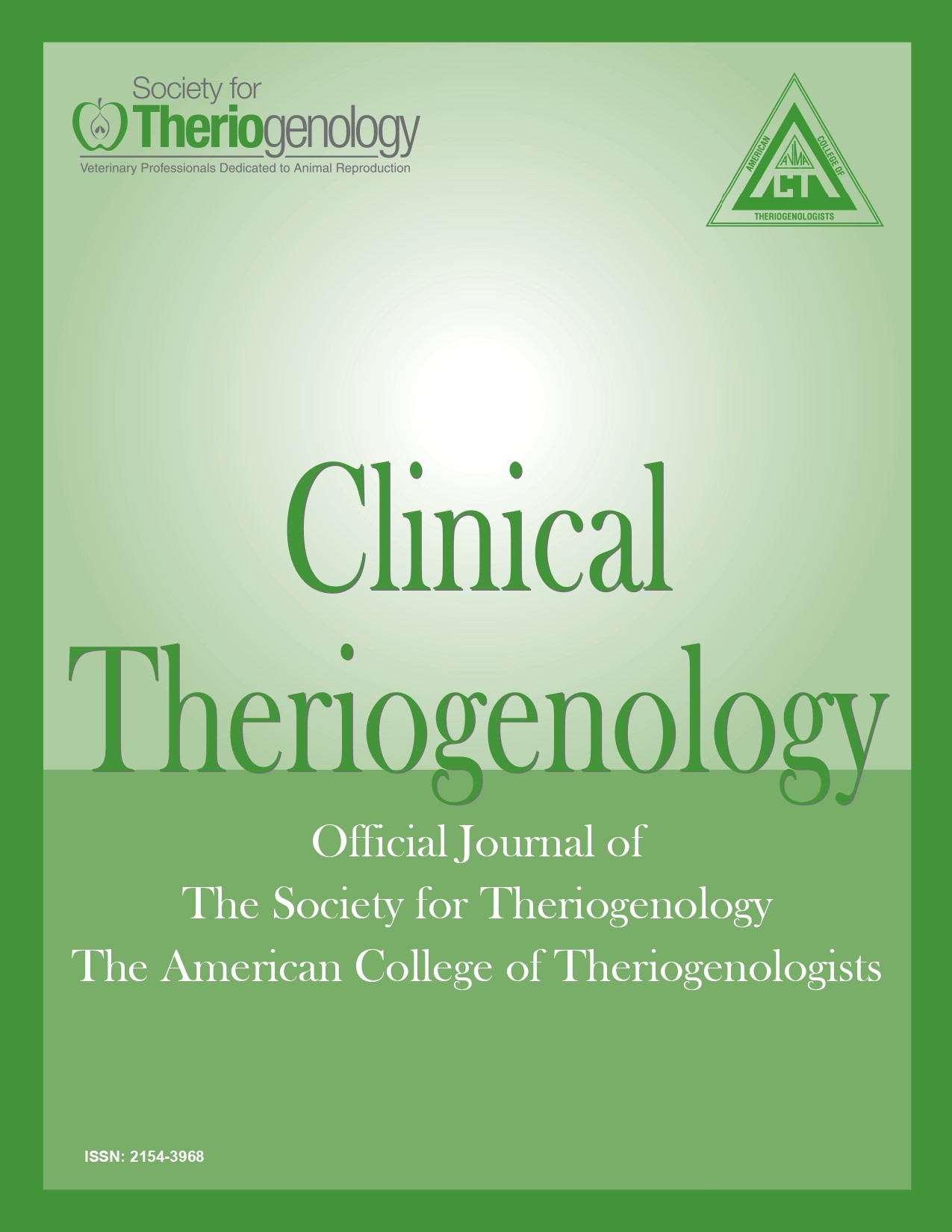Herd level factors associated with pregnancy success and distribution in beef cow-calf herds
Abstract
Identifying factors that influence pregnancy success is important in order to optimize beef cowcalf
herd management. A logistic regression model was used to evaluate the effect of relevant factors
(categories were: herd size, body condition score, breeding season length, and timing of start of breeding
season) on the probability of pregnancy status at 2 time-points (day 21 and end of the breeding season).
Data were collected by convenience sampling from herds (n = 241) consisting of 8,217 head located in
the Midwest and Great Plains regions of the US from 2012 to 2017. Herds with < 50 head had reduced
probability of pregnancy (51 and 78%) compared to medium-sized (50 - 99 head) herds (63 and 84%).
Cows in thin body condition (score ≤ 4 out of 9) at pregnancy diagnosis had reduced probability of
becoming pregnant (44 and 64%) compared to cows in moderate body condition ([score 5 - 6 out of 9] 62
and 86%) and fleshy condition ([score ≥ 7 out of 9] 66 and 91%). Herds with a short (< 63 days) or
medium (63 - 84 days) breeding season had increased probability of pregnancy (65 and 58%) for the first
21-day interval compared to herds with a long (> 84 days) breeding season (49%). Herds that started the
breeding season in the fall (September 30 - December 31) had higher probability of pregnancy at the end
of the breeding season (88%) compared to spring (April 1 - June 30) start dates (82%). Management
factors (herd size, body condition score, breeding season length, and timing of start of breeding season)
had substantial impacts on the probability of pregnancy.
Downloads

This work is licensed under a Creative Commons Attribution-NonCommercial 4.0 International License.
Authors retain copyright of their work, with first publication rights granted to Clinical Theriogenology. Read more about copyright and licensing here.







